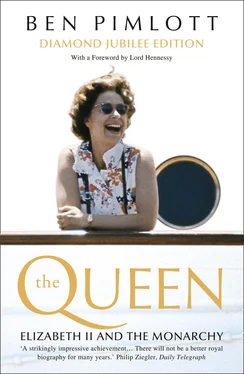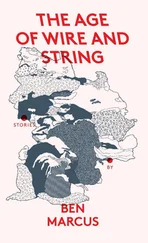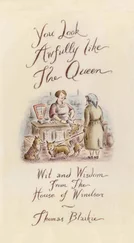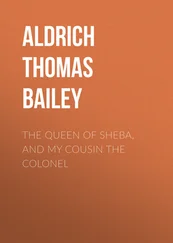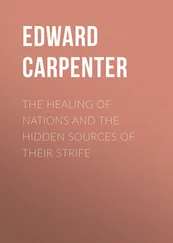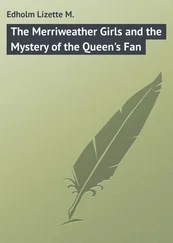A variety of procedures automatically followed the King’s death, even before Elizabeth – now the Queen – knew of it. An emergency Cabinet met at 11 a.m., and decided to hold an Accession Council the same afternoon. There was a discussion of the wording of the Proclamation, which had important long-term effects. It was also decided to extend the Council’s composition. ‘Representatives of other members of the Commonwealth’ were now to join the ‘Lords Spiritual and Temporal, members of the Privy Council, and other Principal Gentlemen of Quality, with the Lord Mayor, Aldermen and Citizens of London’. 52At the Council later in the day, the Lord President, Lord Woolton, read the draft declaration proclaiming the new Monarch as Queen Elizabeth the Second – the first to have been proclaimed in absentia since the accession of George I.
Proclamations echoed around the world, as never before – and never again, for the phenomenon of one individual as hereditary Head of State in so many different colonies and self-governing states is unlikely to be repeated. There was a plethora of invented traditions. In Australia, for example, the proclamation of George VI in 1936 had been read by a secretary in the Prime Minister’s department to a handful of people assembled in the King’s Hall at Parliament House. His daughter’s proclamation was read by the Governor-General from the steps of Parliament House, and similar ceremonies were conducted before large crowds in state capitals around the country. 53In some places, the implications of what was proclaimed caused local difficulties. A particular complaint was made in Scotland, where the National Committee of the Scottish Covenant Association pointed out that, north of the border, she was Elizabeth I. There was a fierce legal argument. On February 20th the Edinburgh Court of Sessions resolved the matter by announcing that, as far as official documents and declarations were concerned, she would be styled ‘the Second’. The result was a grievance against the British Monarchy that was not forgotten.
In Kenya, it was difficult for ‘the lady we must now call the Queen’ – as Charteris began to refer to her – to come to terms, simultaneously, with the loss of a father and becoming Head of State for the rest of her life. It was also hard for her husband. After they got the news, the royal party rapidly prepared for the return journey to London. ‘I have this picture in my mind,’ according to Lord Charteris, ‘of going into the Lodge on 6th February 1952 and the Queen sitting at her desk, pencil in hand, and Prince Philip lying back on a sofa and holding open The Times over his face. And I felt then that something had changed, and it had.’ He recalls her ‘sitting erect, no tears, colour up a little, fully accepting her destiny’. He asked what she wanted to be called as Queen. ‘My own name, Elizabeth, of course,’ she said. 54When Pamela Hicks expressed her sympathy, the Queen’s reaction was ‘I’m so sorry, we’ve got to go back. I’ve ruined everybody’s trip’. 55Parker felt that ‘her feelings were deep, deep inside her’. 56
They left Sagana – the Queen still wearing blue jeans – before five. ‘When all the luggage had been packed,’ a servant wrote in Swahili a few days later, ‘Their Royal Highnesses came to us and said, “Goodbye, and thank you, we shall meet again”. They got into their car and went away.’ 57Charteris asked the press not to take any pictures. ‘As the motor cars left the Lodge, the world’s press lined the road’, he recalled. ‘Yet not a single photograph was taken.’ 58At seven o’clock, the royal party flew from Nanyuki to Entebbe, where they had to wait for two hours in the airport lounge, because of a thunderstorm. Then they began the twenty-four-hour flight home – monitored stage by stage by the world’s news agencies as the plane made refuelling stops. There was little talk on the journey. Dean recalled that once or twice the Queen left her seat, and when she returned she looked as if she had been crying. 59‘She was looking out of the window on her own,’ says Lord Charteris. ‘At one point she called me over. She said: “What’s going to happen when we get home?” I realized that she didn’t know.’ 60
The first thing to happen was a solemn greeting on the tarmac from the Prime Minister, the Leader of the Opposition, and other prominent political figures. At Clarence House, she was met by Queen Mary, veteran of five reigns, who curtseyed and kissed her granddaughter’s hand. It was Churchill, however, who set the scene for what he called a new Elizabethan Age. ‘Famous have been the reigns of our Queens,’ he declaimed in a broadcast that night. ‘Some of the greatest periods in our history have unfolded under their sceptre.’ He also spoke of the Monarchy, ‘the magic link which unites our loosely bound, but strongly interwoven Commonwealth.’ 61
The Queen’s first public presentation took place at a full meeting of the Accession Council at St James’s Palace on February 8th. It was attended by an assortment of Privy Councillors – ‘people one didn’t remember were still alive,’ Dalton noted, ‘and some looking quite perky and self-important.’ The Queen, he thought, looked ‘very small – high pitched, rather reedy voice. She does her part well, facing hundreds of old men in black clothes with long faces. She will take up this task “which has come to me so early in life”.’ 62The contrast with her stumbling father on such occasions was stark. Harold Macmillan noted ‘her firm yet charming voice’ as she said her lines. 63Harold Wilson found the Council ‘the most moving ceremonial I can recall’.
Deep emotions stirred. There were uncomfortable features. It was one of the ironies – or hypocrisies – of the hereditary system that death and renewal were combined: grief at the loss of one monarch was supposed to be accompanied by joy at the arrival of another. Churchill spoke of the thrill in once more invoking the prayer and the anthem ‘God Save the Queen’. 64Yet the thrill at placing a young woman on a pedestal normally reserved for men was a complex one. If there was something grotesque – a distortion of past glories – about the protracted rituals and obeisances associated with the public mourning, there was also a peculiarity about the prostration of old gentlemen before a twenty-five-year-old Queen who had no choice but to accept the part she was asked to play.
Some spoke or wrote about her with barely concealed sexuality. Cecil Beaton described her, after a brief encounter at the theatre in July, as if she were Garbo. ‘The purity of her expression,’ he wrote, ‘the unspoilt childishness of the smile, the pristine quality of her pink and white complexion, are all part of an appearance that is individual and gives the effect of a total entity.’ 65Lord Kilmuir, the Lord Chancellor, found ‘something breathtaking’ in her swift changes of costume and role. He recalled how moved he felt watching her out of the window at the Palace, as she knelt on the grass in a yellow shirt and jodhpurs, calling a dog to come to her – and knowing that, within a quarter of an hour, she would have changed and become a sovereign receiving her subjects. 66Churchill himself soon became besotted. ‘All the film people in the world,’ the premier rhapsodized to Lord Moran, ‘if they had scoured the globe, could not have found anyone so suited to the part.’ 67
It did not take long for the popular newspapers, mixing the lugubrious and the prurient, to see the opportunities. For if the Queen at her Accession had been, in the press imagery, ‘a girl in unrelieved black whom [the King’s] death had brought back from Kenya’s tropic sunshine to the searching chill of Norfolk in mid-winter,’ 68she was also a pretty face to brighten the front page. Some of the finest pre-Coronation pictures show her in mourning. There was an erotic splendour to the line of queens and princesses, Elizabeth II at their head, that attended the lying in state in Westminster Hall, ‘like Moslem women,’ as Crossman put it, ‘clothed in dead black, swathed and double swathed with veils so thick that they couldn’t read the Order of Service through them’. 69
Читать дальше
